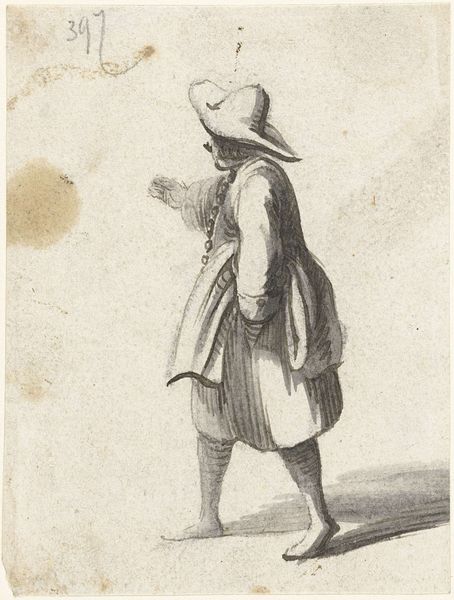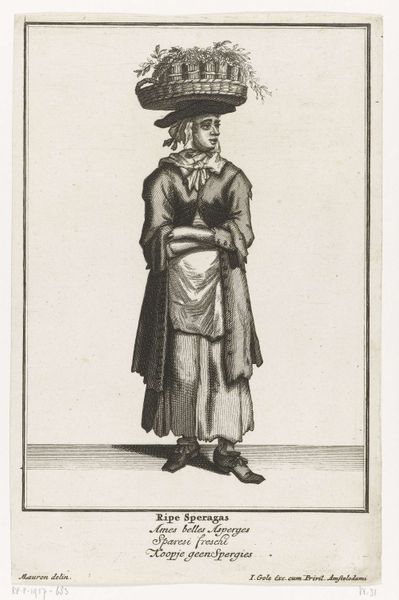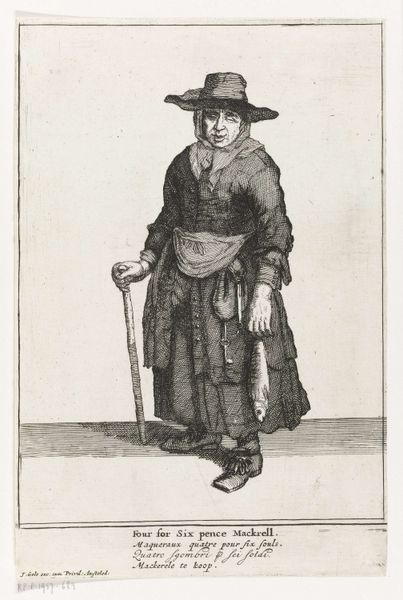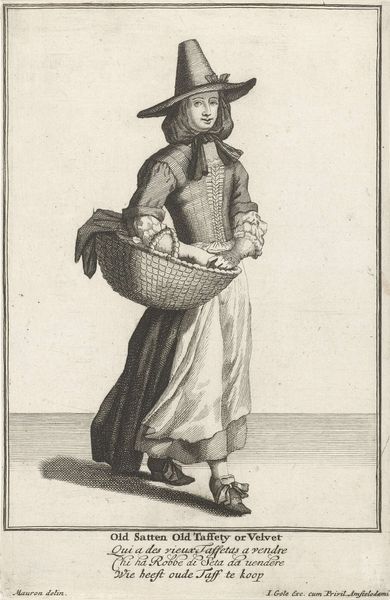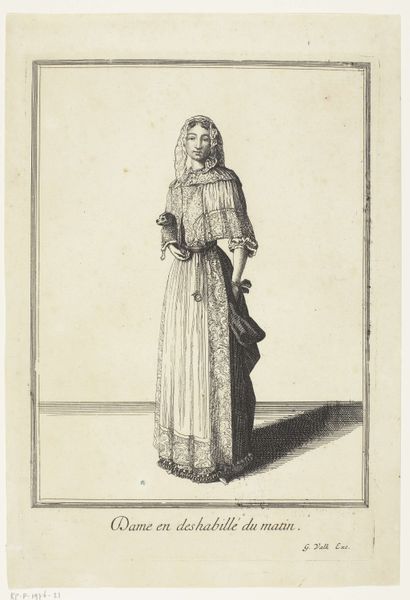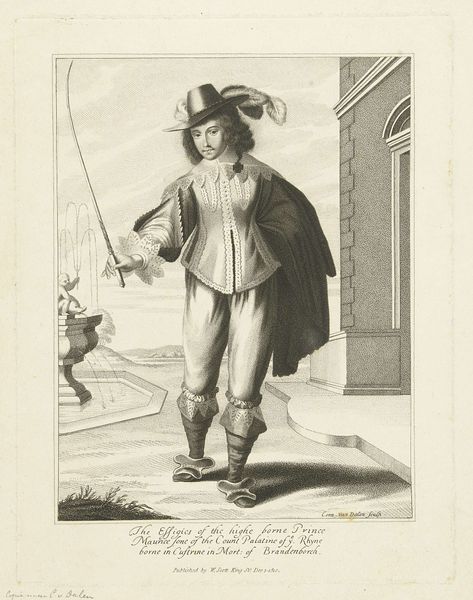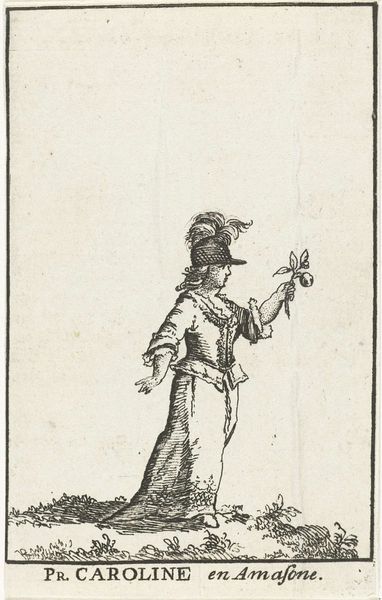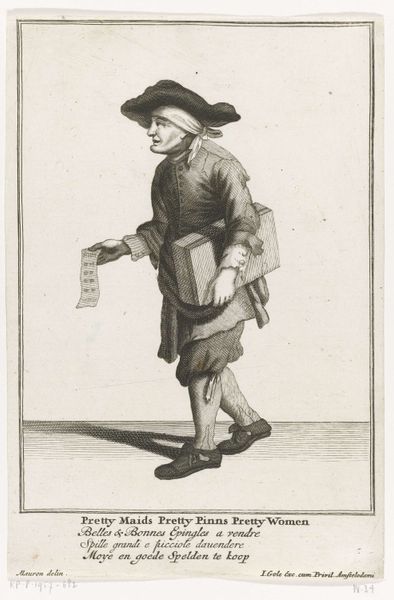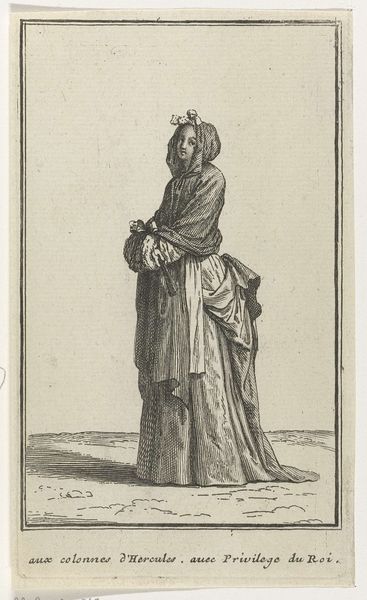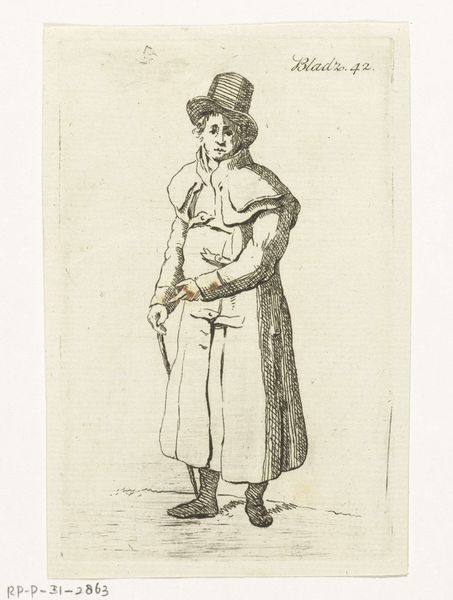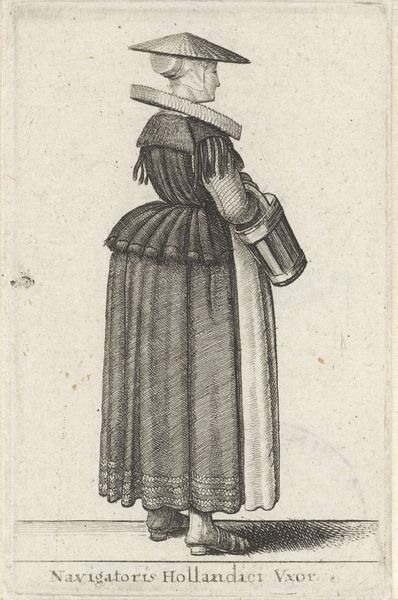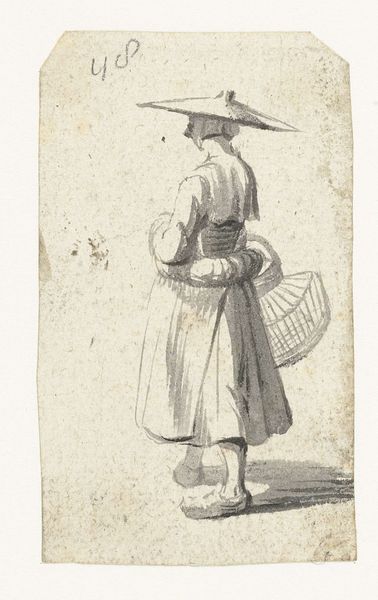
print, engraving
#
portrait
#
baroque
#
dutch-golden-age
# print
#
old engraving style
#
figuration
#
line
#
genre-painting
#
engraving
Dimensions: height 244 mm, width 160 mm
Copyright: Rijks Museum: Open Domain
Curator: This print, "In- en verkoopster van vet," which translates to "Seller of Fat," comes to us from the late 17th or early 18th century, created by Jacob Gole. It resides here at the Rijksmuseum. Editor: The first thing that strikes me is the quiet dignity in her posture, despite what I imagine would have been quite humble circumstances. Her gaze seems directed beyond us. Curator: Indeed. It's a superb example of Dutch Golden Age genre painting, albeit in print form. We see her full-length, carrying a substantial basket, likely containing the fat she sells, balanced skillfully on her head. What might that symbol signify, do you think? Editor: Perhaps the literal weight of labor. But also, think of the period! Dutch society was expanding its global reach. The spice trade, the movement of goods... Maybe she is carrying not just fat, but the literal "grease" that greases the early market economy wheels, keeping them moving in a new and unprecedented way. Curator: I appreciate that layered interpretation! Considering that this is an engraving, Gole’s use of line is really quite remarkable, achieving a sophisticated range of tone and texture. This woman appears monumental! Do you feel that monumental quality invites any empathy on the part of the contemporary viewer? Editor: Well, the text below the image certainly frames how people are intended to understand this piece: “Any Kitchen Stuffe’ have you maids / Qui a de la Graisse a rendre / Chi ha Grasso da uendere / Wie heeft Smeer te koop." That's English, French, Italian, and Dutch: "Who has fat to sell?" It indicates the growth of an international urban consumer culture that includes women like her, rendered across Europe in printed images like this. Curator: Precisely, the universality is intentional. And her expression seems a knowing one, as though she is utterly aware of her role. As we study images, it is crucial that we recognize how visual culture helped shape individual perceptions within complex cultural systems. Thank you. Editor: Thank you. Considering its role within that system can reveal much about that system and its perception, too.
Comments
No comments
Be the first to comment and join the conversation on the ultimate creative platform.
